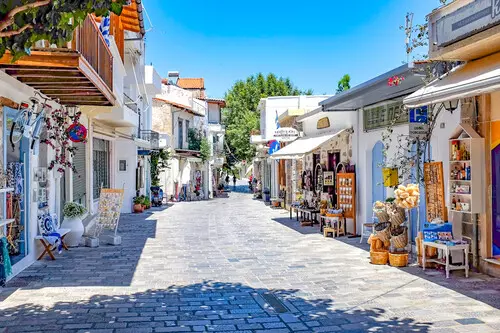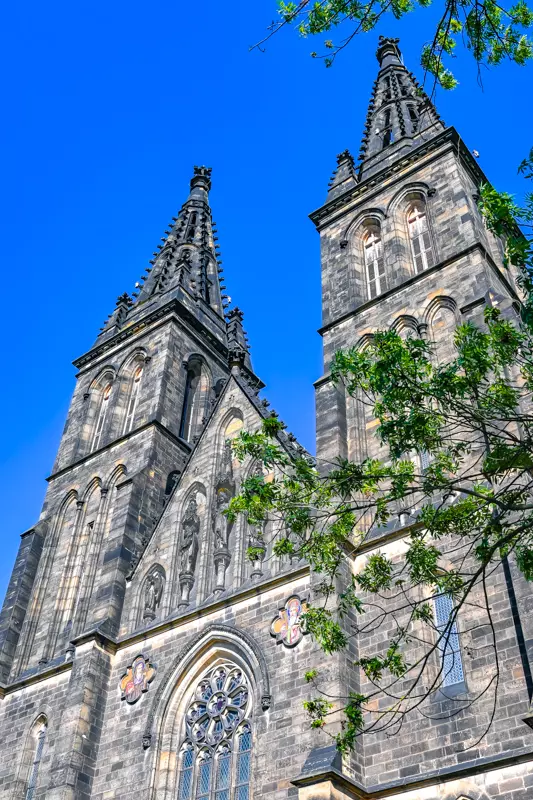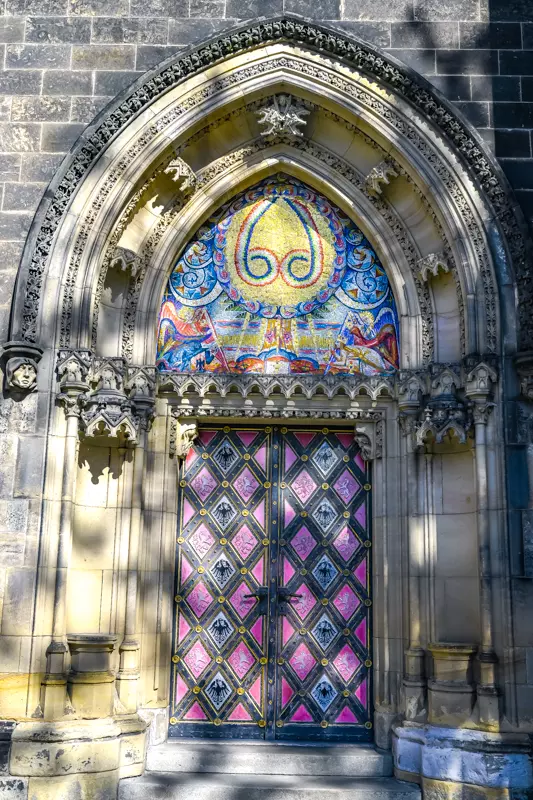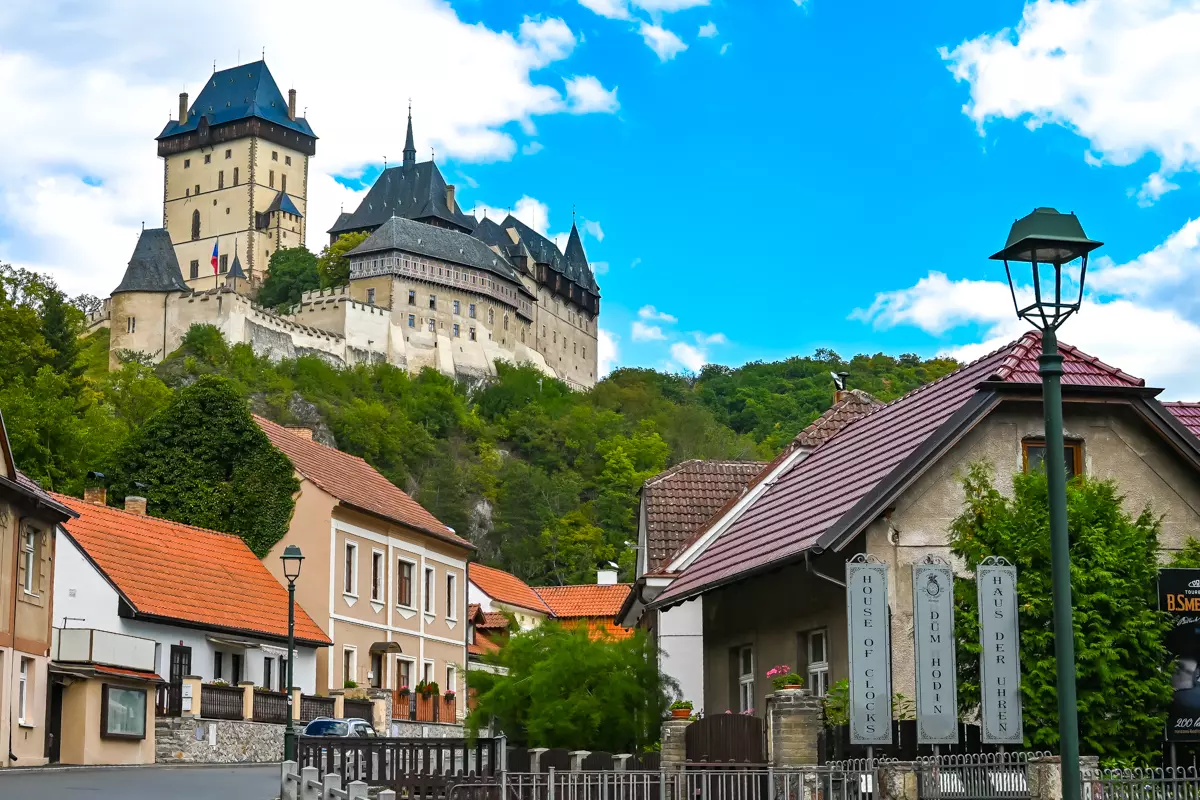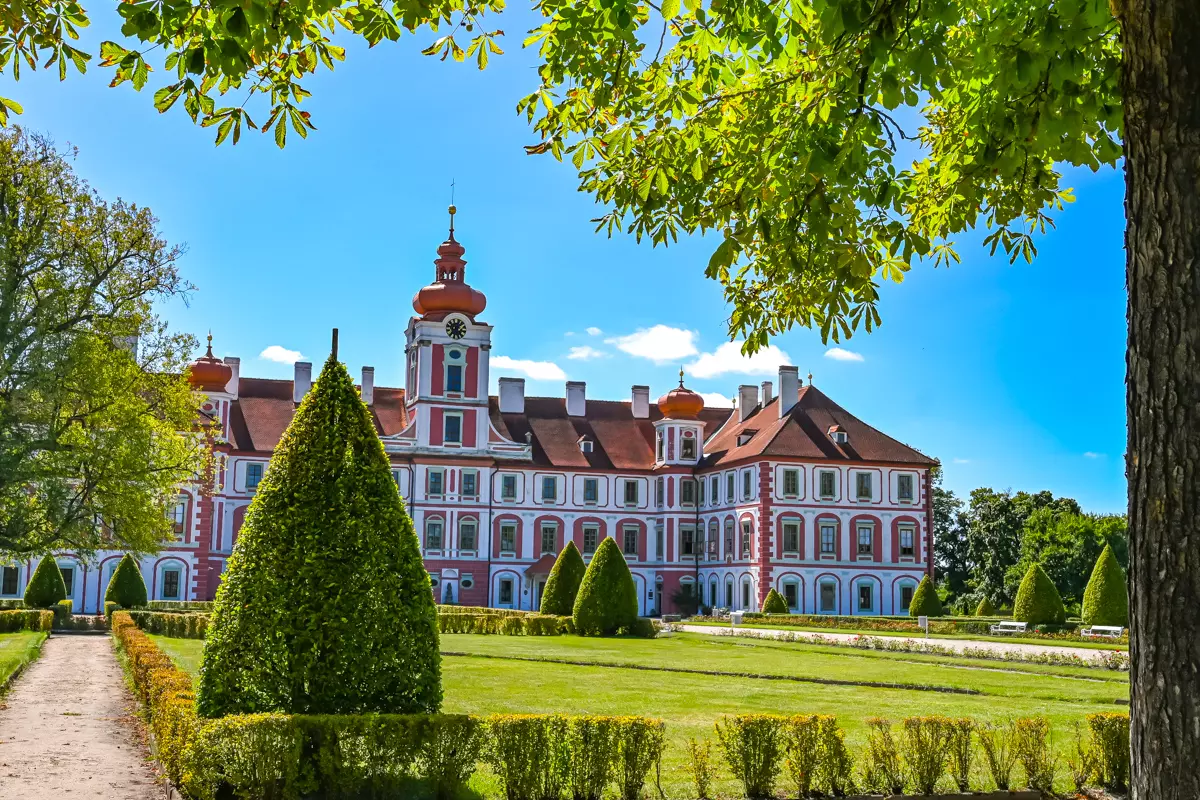Discover Vyšehrad In Prague: A Fortress Off The Beaten Path
In Prague, most tourists head to the Old Town, Charles Bridge, or Prague Castle. I visited those too, but after discovering some interesting information, I decided to wander a bit further—from the crowds to Vyšehrad. Perched on a hill above the Vltava River, this place immediately won me over. Here I found a peaceful park, ancient walls, a basilica, and breathtaking views of the Czech capital.
Although today Vyšehrad in Prague mostly attracts travelers for its panoramas and tranquil walks, it also holds countless stories. I’ll share what makes this place special, what’s worth seeing, and why it can become one of the most memorable stops on your trip to Prague.
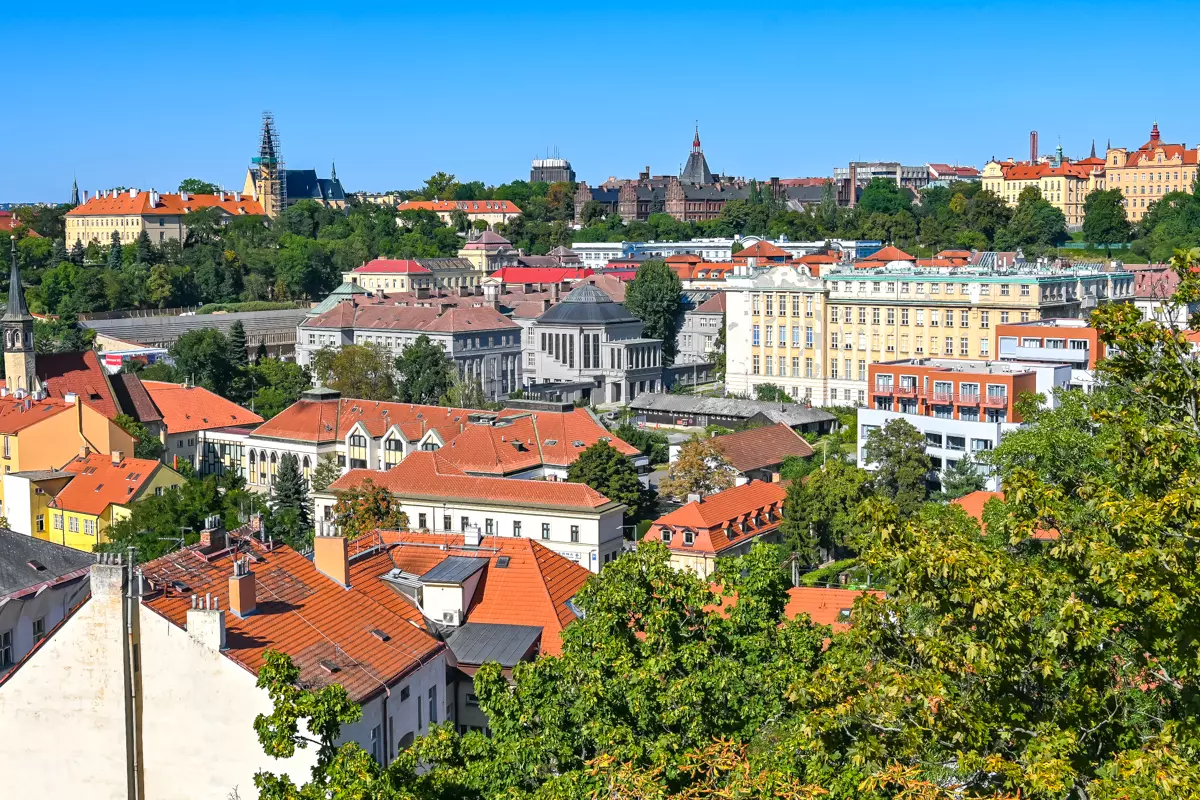
History & Legends
Once you start exploring Vyšehrad, you realize it’s much more than just a beautiful park on a hill. According to legend, it was here that Princess Libuše. The prophetess who foretold the glory of the city that would become today’s Prague once lived. While historians debate how much truth lies in these tales, locals like to say that without Vyšehrad, there would be no Prague at all.
The true history begins around 1070, when King Vratislav II moved his residence here, making Vyšehrad the official seat of rulers. In later times, it turned into a defensive fortress, and today the most visible remains from those days are the impressive gates and the long walls that seem to embrace the entire hill.
Interestingly, Vyšehrad was never only a military or political site. Churches, a rotunda, and eventually a cemetery were built here. Where the most famous Czech artists and thinkers now rest. So the moment you step through the gates, you will enter a space where history truly comes alive, from legends to the real people who shaped the nation’s culture.
Vyšehrad Walking Itinerary
Leopold Gate
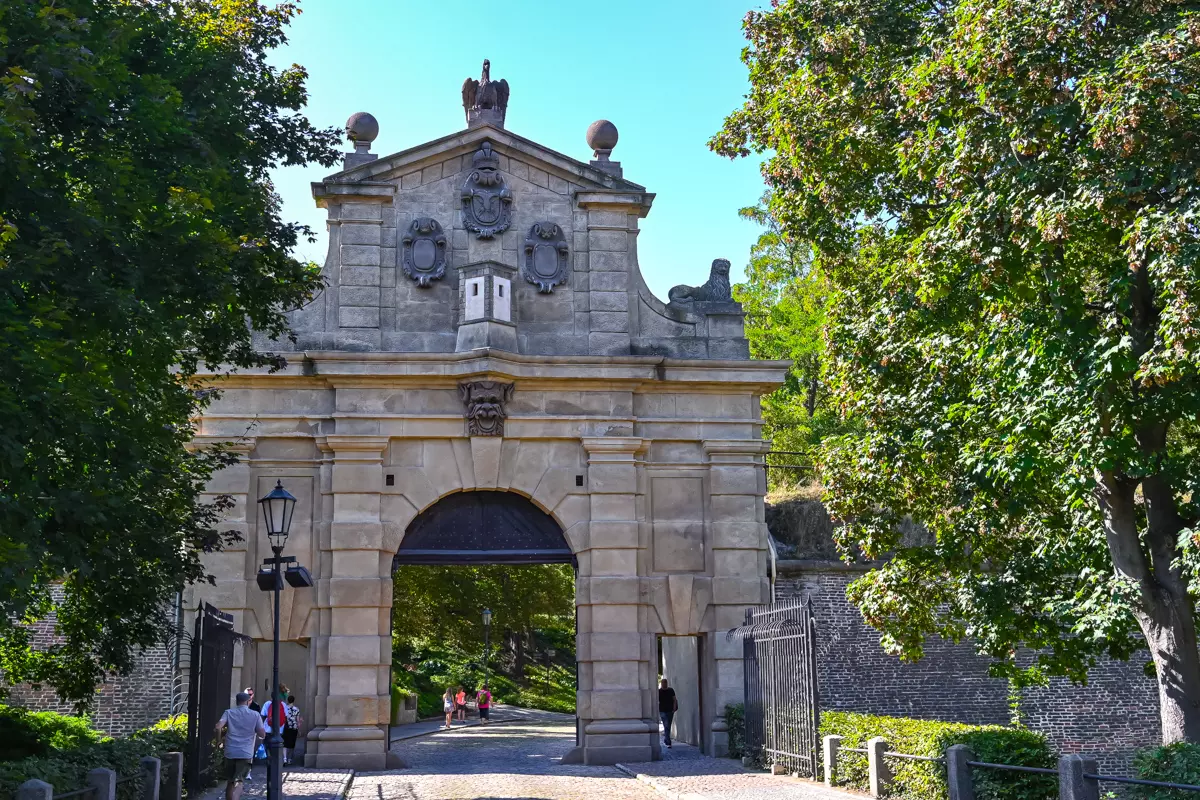
Begin your walk around Vyšehrad at the Leopold Gate. That’s exactly how I began my visit, and I recommend you do the same.
The gate was built in the early 17th century, when the area was fortified as a defensive citadel. At first glance, it seems like just a massive stone entrance, but as you get closer, you’ll notice Baroque details—a coat of arms, ornaments, and niches.
What’s most interesting is that today the gate feels almost symbolic. Once it was an important part of the city’s defense, and now it serves as an entrance to a different side of Prague. Passing through, you leave the noisy streets behind and enter a calmer space—a park with pathways, old walls, and buildings that gradually reveal the full beauty of Vyšehrad.
Good To Know: Right next to the Leopold Gate is the Vyšehrad Information Center. Here you can buy tickets for guided tours, pick up a souvenir, or simply get practical info before exploring. Open daily from 10 A.M. to 6 P.M.
Rotunda of St. Martin
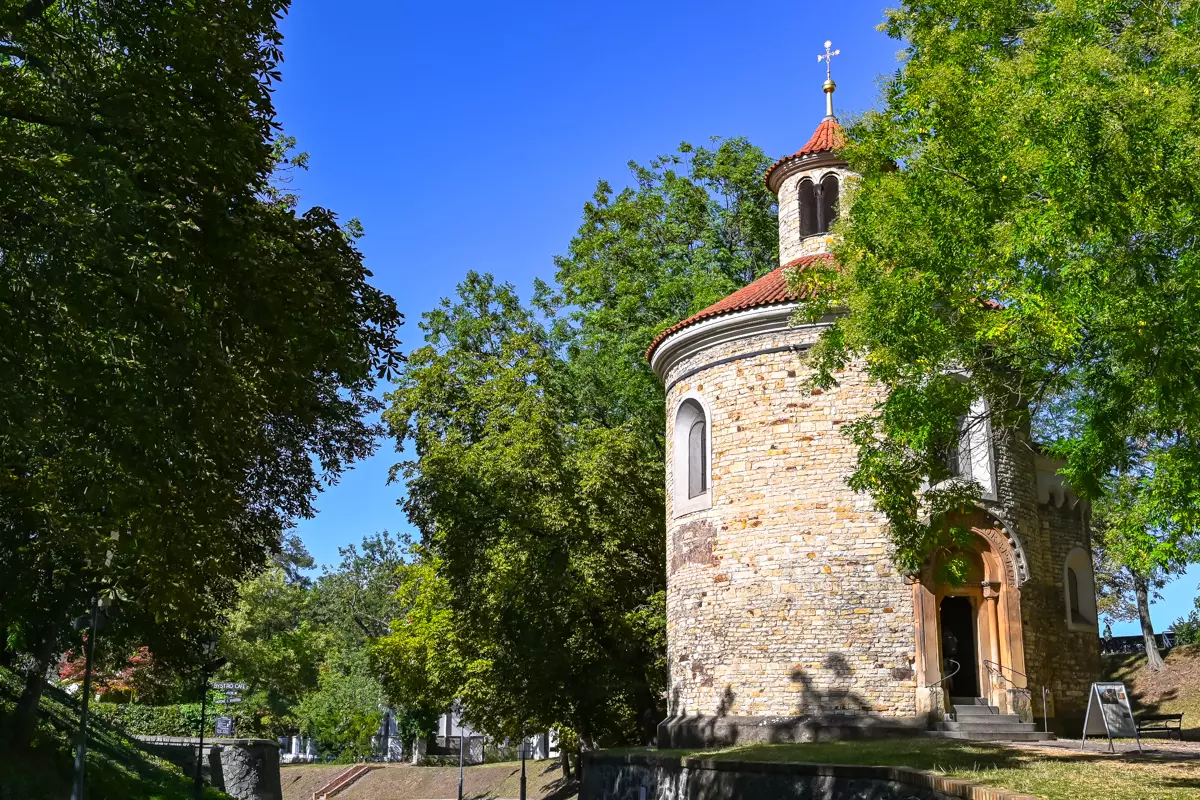
Just a few hundred steps from the Leopold Gate, hidden among the trees, stands a small but remarkable building—the Rotunda of St. Martin. It is one of the oldest surviving sacred structures in Prague, built in the early Middle Ages, around the year 1100. At first sight, it looks very modest—round walls, a small tower, without any grandeur.
Over the centuries, this tiny rotunda has witnessed turbulent times. It was damaged during the Prussian siege of Prague in 1757, served for a time as a gunpowder storehouse, and later was used for storage or as shelter for the poor. A cannonball still embedded in its wall recalls that dramatic chapter of history.
Today the rotunda is usually closed to visitors, opening only for occasional services. Still, it’s worth pausing here for a few minutes to take in its simple Romanesque form and the quiet atmosphere around it.
Casemates and The Gorlice Hall
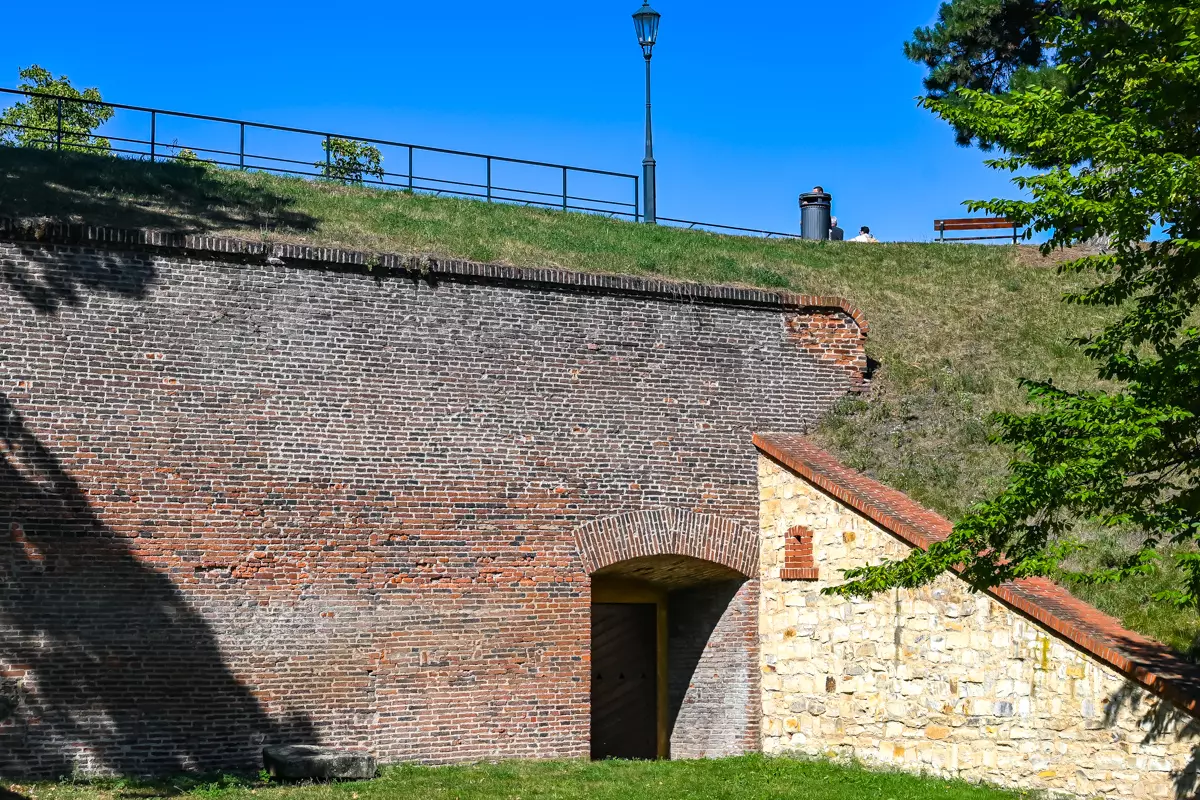
Continuing along my route, you’ll reach the casemates—underground corridors dating back to the 17th century, excavated along with the fortress walls. Today, you can walk through these tunnels, but it’s worth knowing that you can only enter the casemates with a guide. Tours are popular and sell out quickly, especially during the season, so I didn’t manage to get inside because I hadn’t bought a ticket in advance. Still, I bet the experience is quite unusual—after all, it’s not every day you get to descend into such a place right in the middle of a city.
At the heart of the casemates lies the Gorlice Hall—a large chamber with high vaulted ceilings. Today, it hosts exhibitions and occasionally concerts. The most notable feature of this space is the collection of original Baroque statues from Charles Bridge, moved here for safekeeping. The bridge now displays replicas, while the authentic works are preserved in this underground hall.
Tip: Tickets for the casemates and Gorlice Hall guided tours often sell out, so buy them online in advance.
Brick Gate
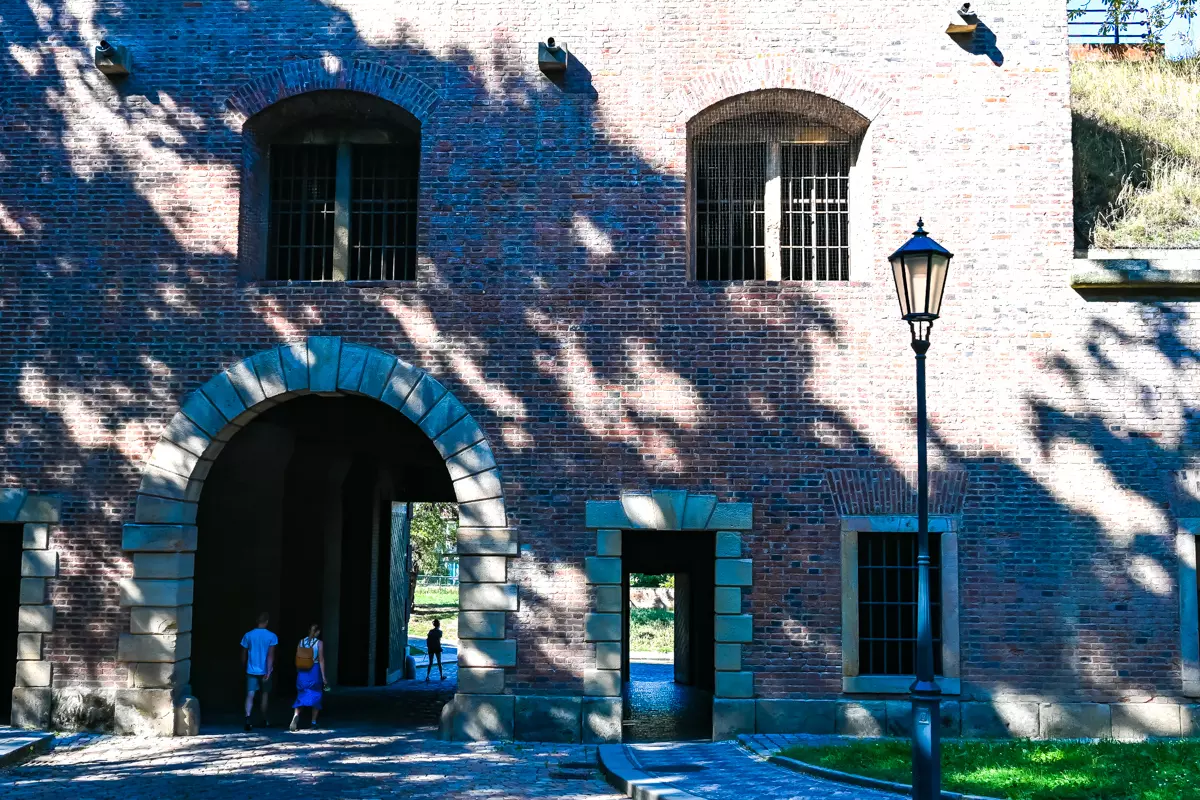
As you walk further along the fortress wall, you’ll come to the Brick Gate. This is another entrance to Vyšehrad, which was built in 1841. The gate takes its name from its red brick construction, which sets it apart from the older gates of Vyšehrad.
From the outside, the gate looks modest, without the elaborate decorations typical of the Baroque or Gothic styles. Its structure reflects the spirit of 19th-century architecture. The gate has three passages—one for vehicles and two for pedestrians—with guardrooms on either side.
Today, the Brick Gate is not only a convenient entrance for both locals and visitors. Here you’ll also find the information center and the ticket office for guided tours, including those to the casemates and the Gorlice Hall.
Basilica of St. Peter and St. Paul
The next stop is the beautiful Basilica of St. Peter and St. Paul, rebuilt in the late 19th century in Neo-Gothic style by architects Josef Mocker and František Mikš. Its two tall towers are visible even as you walk through the park. The facade is narrow and high, built of dark stone, making the church immediately stand out against the surrounding greenery. It is the most recognizable symbol of Vyšehrad.
Stepping inside, you immediately notice a striking contrast. While from the outside the church looks dark and stern, inside it is brighter and more colorful. Here you will see vibrant stained glass, frescoes, and numerous decorations created by well-known Czech artists. Although the church is not very large, every detail feels carefully designed.
Interestingly, the basilica has undergone several transformations throughout its history. The first church on this site was Romanesque, later rebuilt in Gothic style, and its current appearance dates back to the 19th-century reconstruction. As a result, the building brings together elements from different historical periods.
Tickets & Opening Hours: You can visit the basilica daily, and tickets are required for entry €5 (130 CZK). It is generally open from 10:00 A.M. to 5:00 P.M.
Vyšehrad Cemetery
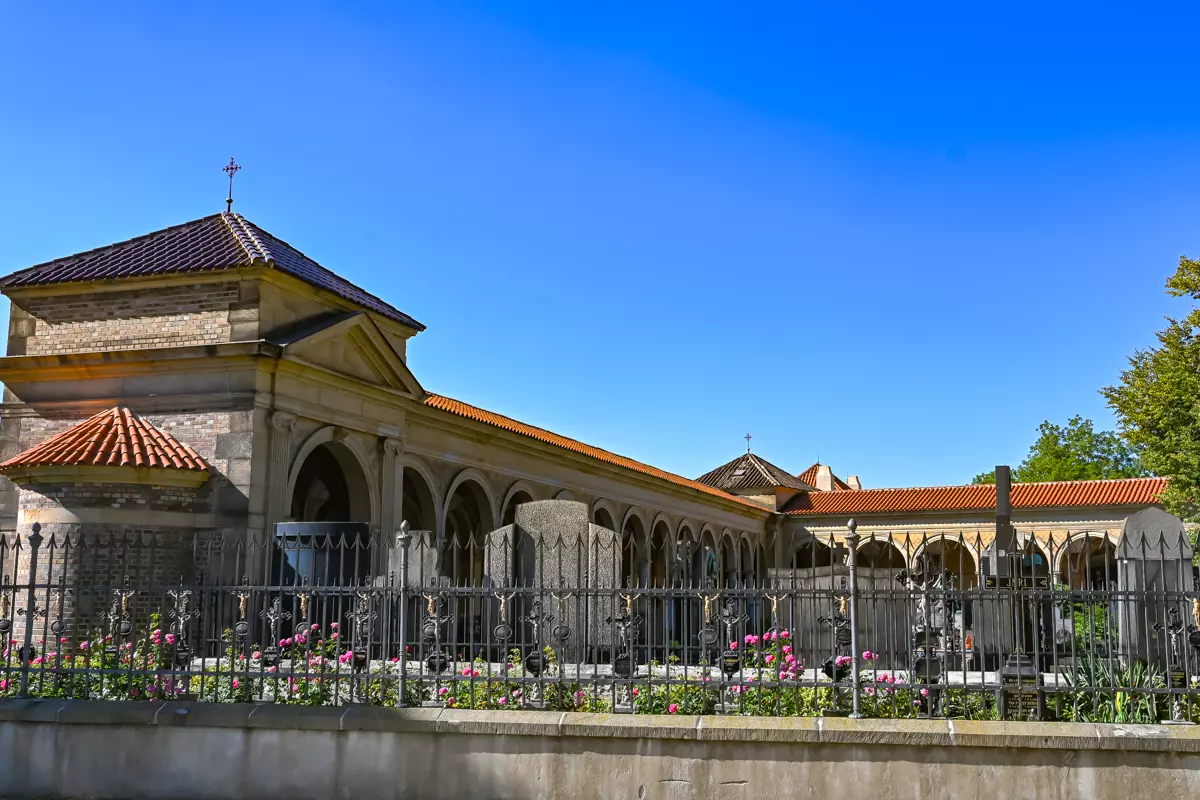
As you leave the basilica, just a few steps away you’ll enter Vyšehrad Cemetery. This is not just a burial ground, but the nation’s pantheon, where many of the most important figures of Czech culture, art, and science are buried. I usually don’t visit cemeteries, so I didn’t go inside, but it’s worth knowing that this place is considered an important part of Czech history and culture. Those who do will find impressive monuments and sculptures.
The most prominent feature is the Slavín mausoleum—a large collective tomb where the country’s greatest creators are laid to rest, such as Alfons Mucha. Other famous figures, including Bedřich Smetana, Antonín Dvořák, and Karel Čapek, have their graves in separate parts of the cemetery.
Sculptures In Vyšehrad
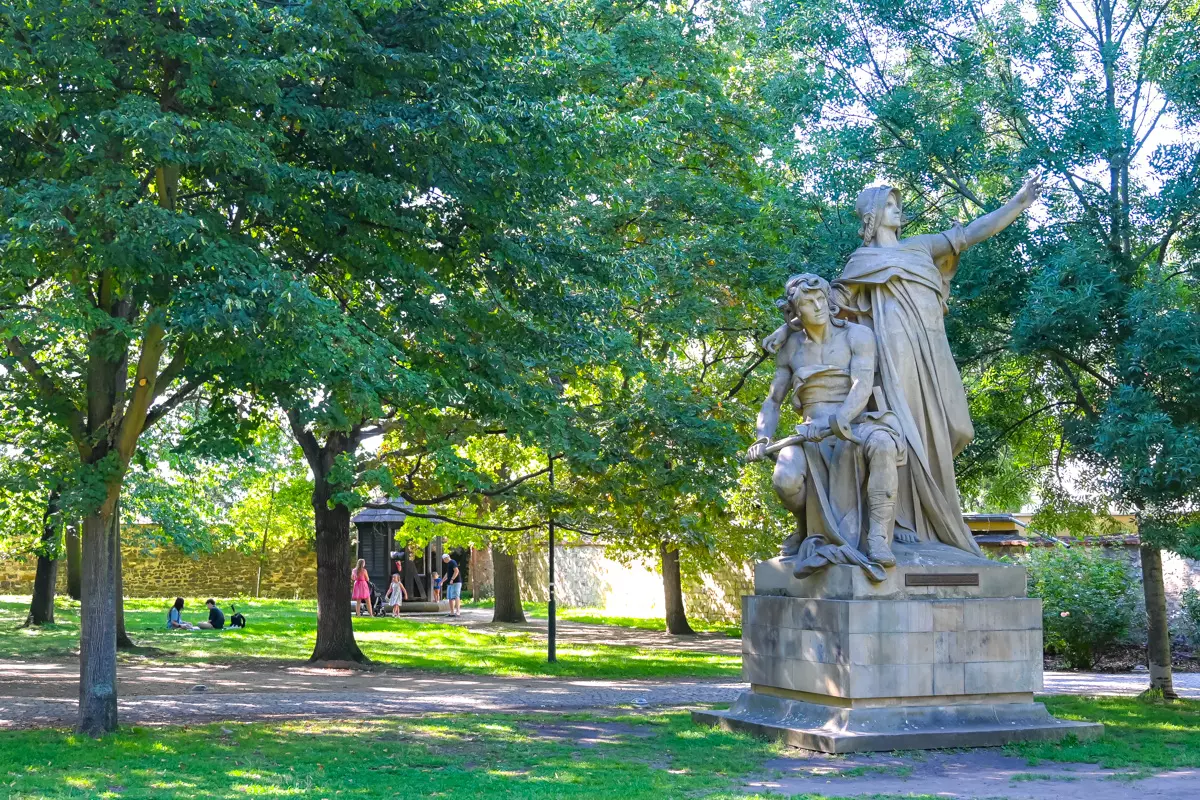
As you leave the basilica, you enter the park, where your eyes inevitably catch on the sculptures. Some are tucked among the trees or along the paths, so each one feels like a small discovery. The most interesting are the so-called Myslbek sculptures—four monumental groups depicting characters from Czech legends. They were placed here in the late 19th century, when the idea arose to create an open-air sculpture gallery.
The sculptures portray legendary figures and stories full of drama. For example, Lumír and Song depicts the last bard smashing his harp, Ctirad and Šárka recalls the legend of the uprising of women, and Libuše and Přemysl tells the story of the dynasty’s beginnings. These works were created not just to decorate the park, but to keep Czech myths and their symbolism alive for visitors.
Viewing Points
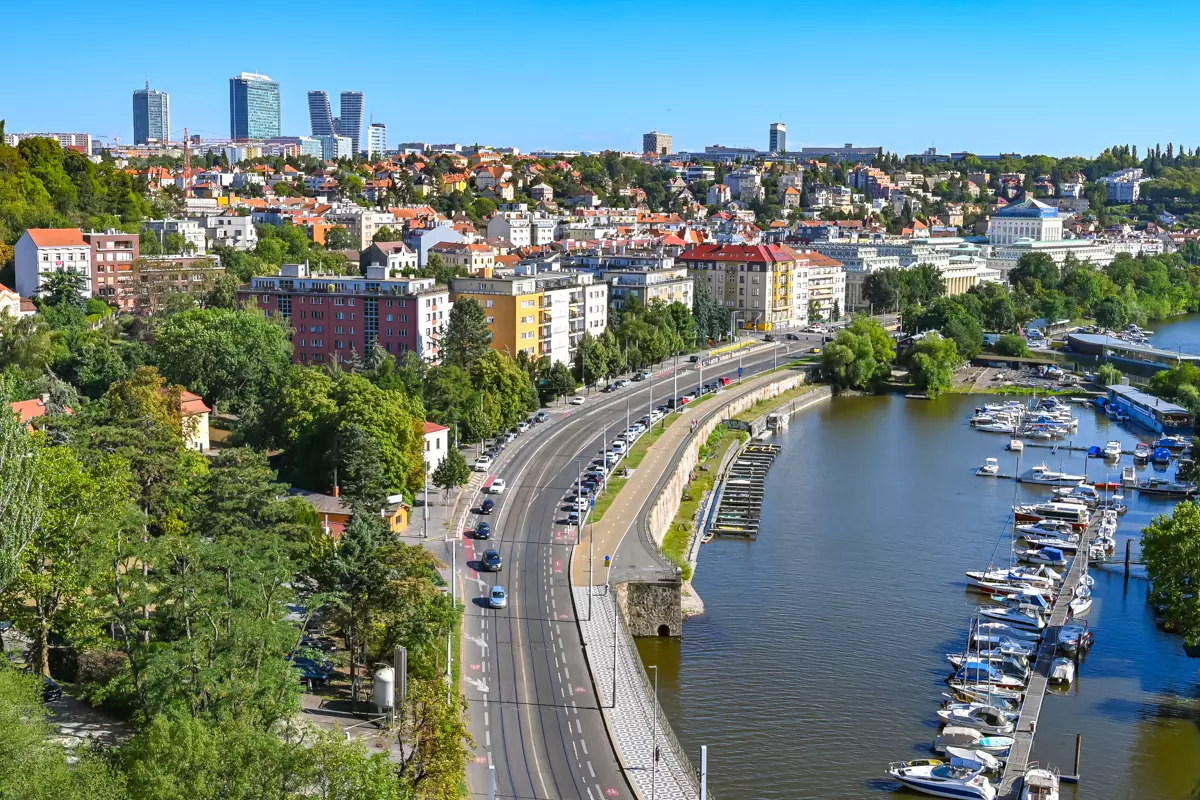
At the end of the route, one of Vyšehrad’s most pleasant highlights awaits you—a walk along the fortress walls. The paths here are quite spacious, with greenery and seating along the way, so even when there are more visitors, it still feels fairly quiet. From the walls, you get a broad panorama of Prague—the bend of the Vltava, the city’s bridges, and the towers of the Old Town in the distance.
Some spots are especially photogenic. For example, you can look at the river with all the bridges lined up in one view, or watch everyday city life from the bastions. For me, the view of the bridges was the most impressive. These walls are among the best places in Prague to pause and simply take in the city from above.
Also read: Old Town Square in Prague [Full Guide!]
Vyšehrad Walking Map
Here is a map to help you easily find your way around Vyšehrad. My suggested walking route starts from the Vyšehrad metro station, but it’s easy to adjust no matter where you arrive from. If you enter from another side (for example, through the Brick Gate or from the river), you can simply explore the sights in your own order, making a comfortable loop.
Click the map to see the day’s route on Google Maps.
How To Get To Vyšehrad
If you’re planning a trip to Vyšehrad, it’s good to know that there are several ways to get here, each with its own advantages.
Metro
The fastest option is the red C line. Get off at Vyšehrad station, and from there it’s about a 10-minute walk to the main entrance. The route is straightforward, leading you uphill to the historic walls and gates of Vyšehrad.
Tram
If you prefer a more scenic ride, you can take a tram. Get off at the Výtoň stop—it’s then about a 10-minute uphill walk to the Brick Gate. Along the way you’ll pass through quiet residential streets before reaching the fortress walls.
Another option is the Albertov stop, from which the walk is a few minutes shorter, though a bit steeper. Either way, taking the tram gives you a glimpse of everyday Prague life outside the tourist-heavy center.
Taxi & Ride-hailing
If you don’t want to deal with public transport, a taxi or ride-hailing service is a great choice. From the city center, the ride usually takes around 10–15 minutes, depending on traffic. The driver can drop you off at the Brick Gate or one of the other main entrances by the bastions. It’s more expensive than public transport, but very convenient—you get out almost at the gates and walk straight into the grounds.
Where To Eat Near Vyšehrad
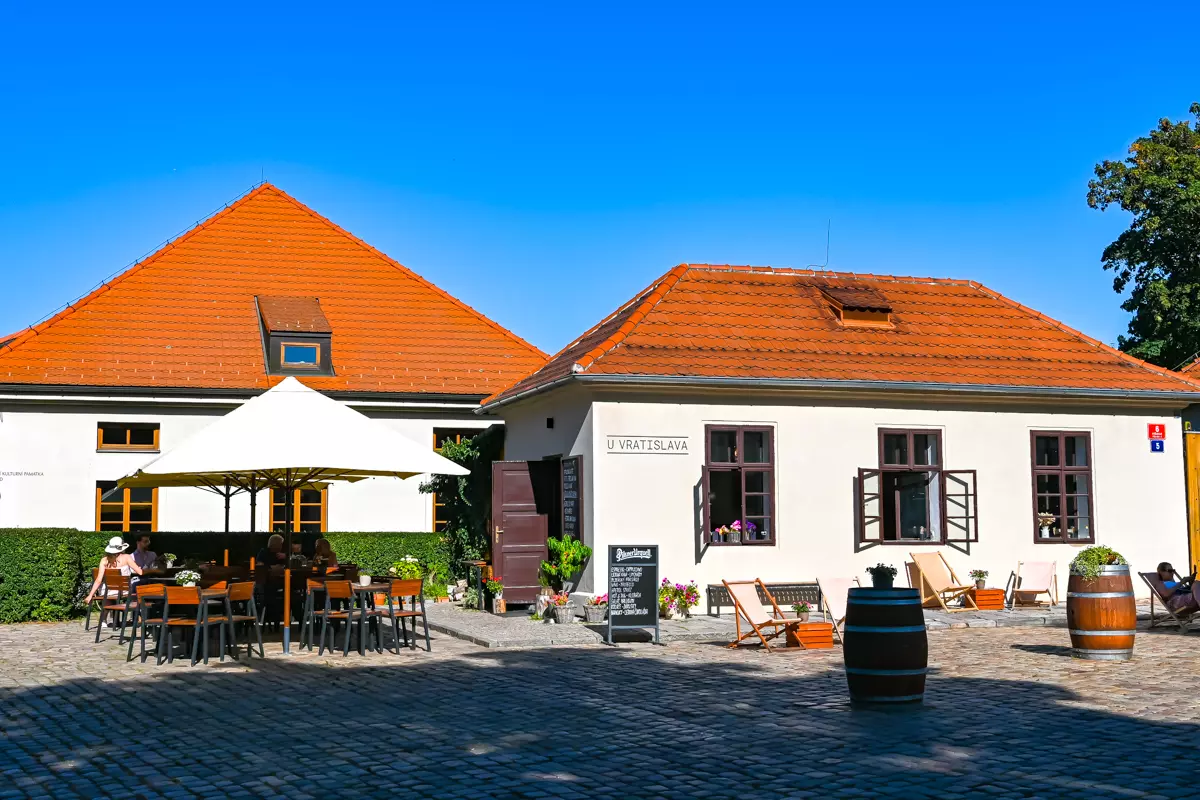
After a walk, you’ll probably want to stop somewhere for a meal. There are several options here.
The simplest choice is Na Hradbách, a small beer garden by the walls. It offers beer, light snacks, and grilled dishes. While it’s not fancy, sitting outdoors with a view of the city creates a very different atmosphere than in the tourist center.
For traditional Czech cuisine, it’s worth heading down to U Kroka. The restaurant is known for generous portions and classic dishes such as goulash with dumplings or roast duck. The atmosphere is casual, prices are moderate, and it’s also popular with locals.
Another nearby option is U Vratislava, a small cafe right by Leopold Gate. It’s modest place serving coffee and light snacks rather than full meals. This makes it a convenient stop if you just want a quick break in a quieter spot, either before or after your walk.
Also read: Prague Jewish Quarter (Full Guide)
FAQs About Vyšehrad In Prague
Walking around the park grounds is free. However, entry to sites such as the basilica or the guided tour of the casemates with Gorlice Hall requires a ticket.
It depends on your pace. If you simply walk around the walls and the park, an hour is enough. If you’d like to visit the basilica, the cemetery, or join a guided tour of the casemates, plan on 2–3 hours.
Yes. The park is spacious, the paths are wide, and there’s plenty of room to run around. The casemates are underground and may feel dark, so they are better suited for older children.
The most popular one is the stretch of walls overlooking the bend of the Vltava with all the bridges lined up. At sunset, the city below looks even more impressive.
Yes. There are lawns and plenty of benches, and you’ll find small shops nearby to grab a snack or a drink. Just make sure to clean up after yourself.
Book your flight
For the best flight deals, I always rely on Skyscanner. Features like Multi-city and Explore Everywhere help me uncover incredible travel opportunities.
Rent a car
Discovercars is my top choice for comparing car rental prices for any road trip around the world. The booking experience is always smooth and easy.
Travel insurance
SafetyWing provides affordable travel medical insurance with global coverage, perfect for digital nomads and long-term travelers.
Book Tours & Attractions
Experiencing a destination to the fullest is easier with a well-planned itinerary. I use GetYourGuide for guided tours and Tiqets for quick access to museum and amusement park tickets.
Protect yourself online by VPN
No matter where I go, I always use NordVPN for secure browsing and to ensure I can access websites that might be blocked in certain countries.
Disclosure: I only suggest companies that I personally rely on. If you use the affiliate links in my posts to book services, I’ll earn a small commission, with no extra cost to you.
Have you visited Vyšehrad in Prague? Share your experience in the comments!
Share on

Hi, I’m Evelina, a travel enthusiast who loves nature, peace, and authentic places. I cherish the freedom to explore and learn with each adventure, whether it’s hiking trails, stunning beaches, natural parks, unique architecture, or rich cultural heritage. I hope my experiences inspire you to embark on your own journeys!
